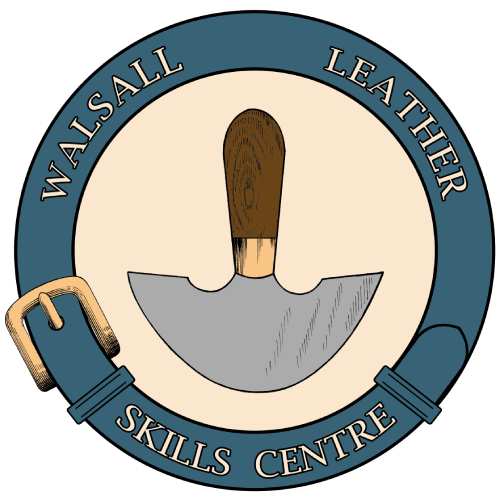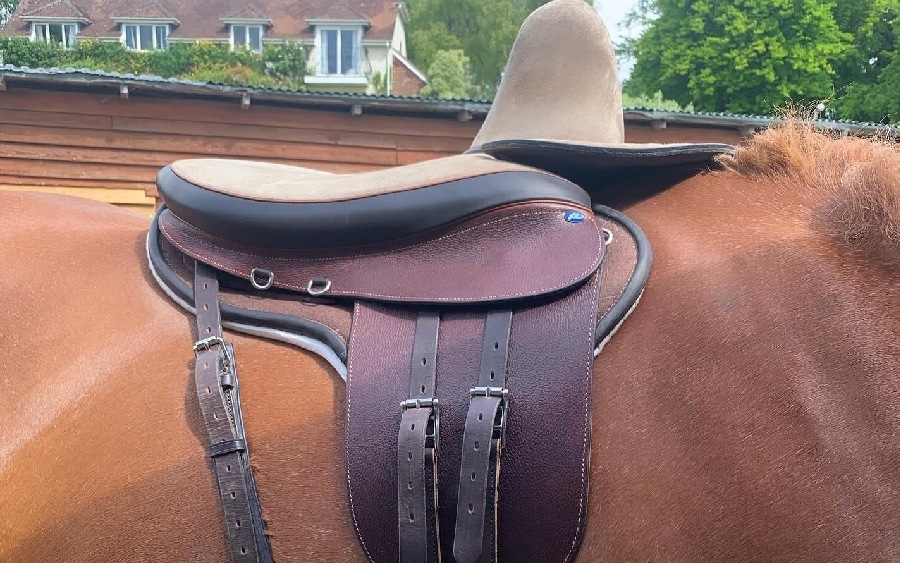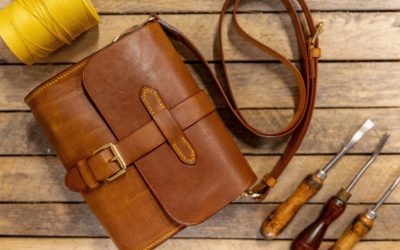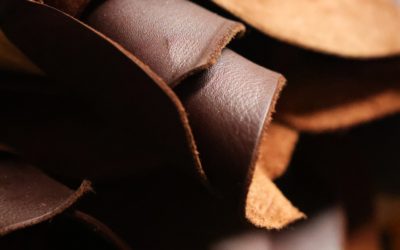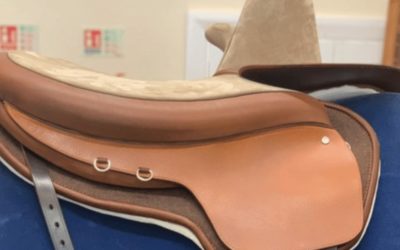Side saddle riding is more than a style—it’s a journey through history, culture, and the art of precision.
Crafting a side saddle requires a unique combination of skills and an understanding of the tradition and mechanics that go into the movement of the horse, rider, and how to establish and maintain balance.
In this guide, we’ll introduce you to the art of side saddle building, exploring its historical roots, materials, essential components, and techniques.
For those eager to dive deeper, our Side Saddle Construction Course at Walsall Leather Skills Centre provides the perfect hands-on opportunity for experienced leather workers to bring this tradition to life.
Did you know, you can build a complete side saddle in just two weeks?

This is one of the side saddles made in the first cohort of the two week course at the Centre. From start to finish in two weeks!
The History of Side Saddles
Side saddles are thought to have first appeared as early as the 14th century, with early depictions of women riding in a modest and safe manner. This method of riding became essential in a time when social norms discouraged women from riding astride, allowing them to participate in equestrian pursuits while adhering to societal expectations. By the 16th century, side saddle design evolved to support more secure and controlled riding.
Over the centuries, side saddles gained prominence, especially in prestigious events. Notable side saddle riders include Queen Victoria, who was often depicted riding side saddle, and contemporary figures who have kept the tradition alive in modern equestrian shows. Side saddle classes remain a highlight in competitive riding events, showcasing both elegance and skill.
The Key Components of a Side Saddle
A side saddle is a combination of carefully designed parts, each serving a purpose that influences the saddle’s balance, comfort, and safety.
- Tree: The foundational frame that shapes the saddle. The tree’s design impacts stability, balance, and longevity. It’s crucial for the saddle to fit properly, distributing the rider’s weight evenly to maintain balance and prevent discomfort or injury to the horse. The tree is fitted with a safety bar for the stirrup.
- Seat: The seat is tailored for comfort, supporting the rider’s posture and weight. Modern side saddles are designed with a flat seat, allowing even weight distribution. This seat includes a doeskin lining for added grip and comfort.
- Stirrup and Balance Strap: Essential for the rider’s stability, there is a single stirrup on the near side. The balance strap works alongside the girth straps but from a point much further back on the ‘off side’, to keep the saddle aligned and secure during movement.
- Panels and Flocking: These panels distribute the rider’s weight evenly across the horse’s back. They are traditionally lined with linen, chosen for its breathability and durability, which helps maintain comfort for the horse.
- Pommel: Unlike astride saddles, side saddles have two pommels. The fixed head (or queen) supports the rider’s right leg, while the lower leaping head wraps around the left thigh, providing stability during motion.
Detailed Diagrams and Unique Features
Below are two images showcasing modern side saddles with labeled components:
These diagrams illustrate a modern side saddle, complete with a ‘Whippy no5’ short off-side flap and a Mayhew safety stirrup fitting. The seat and both pommels feature a luxurious doeskin inlay, known for its soft yet durable texture, providing additional comfort and grip for the rider.
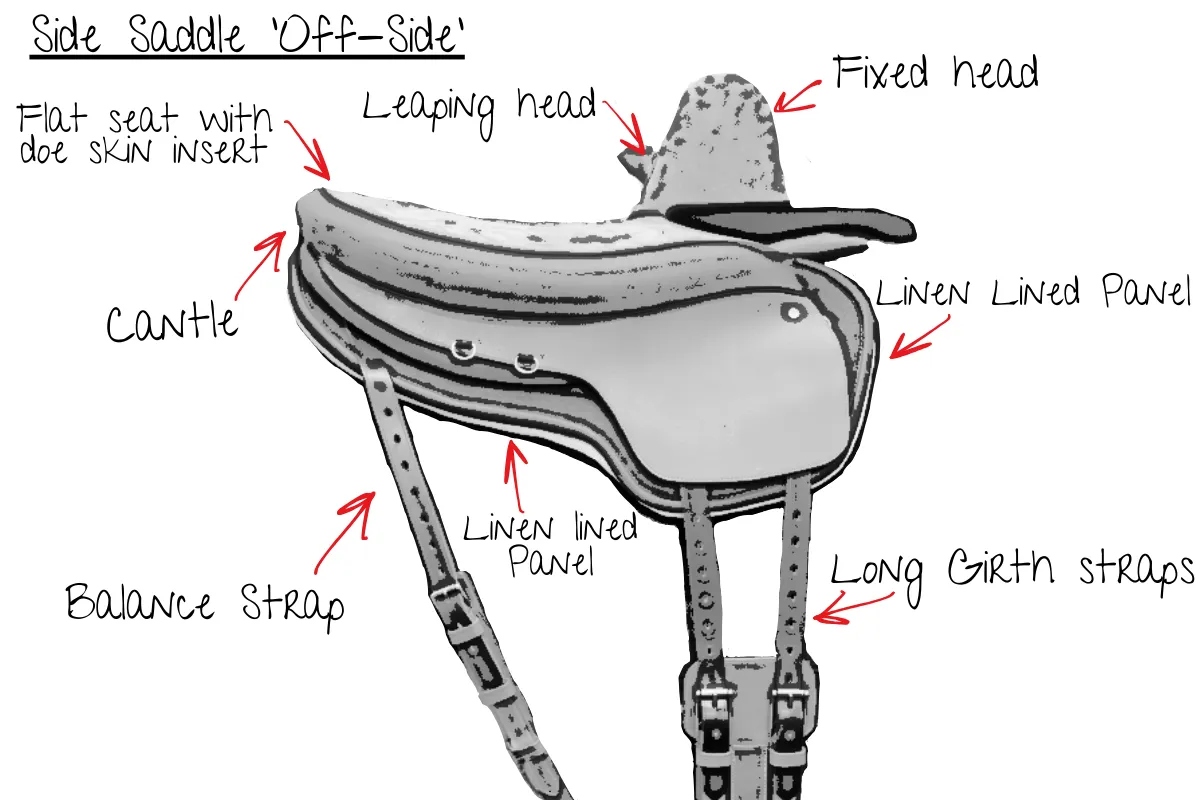
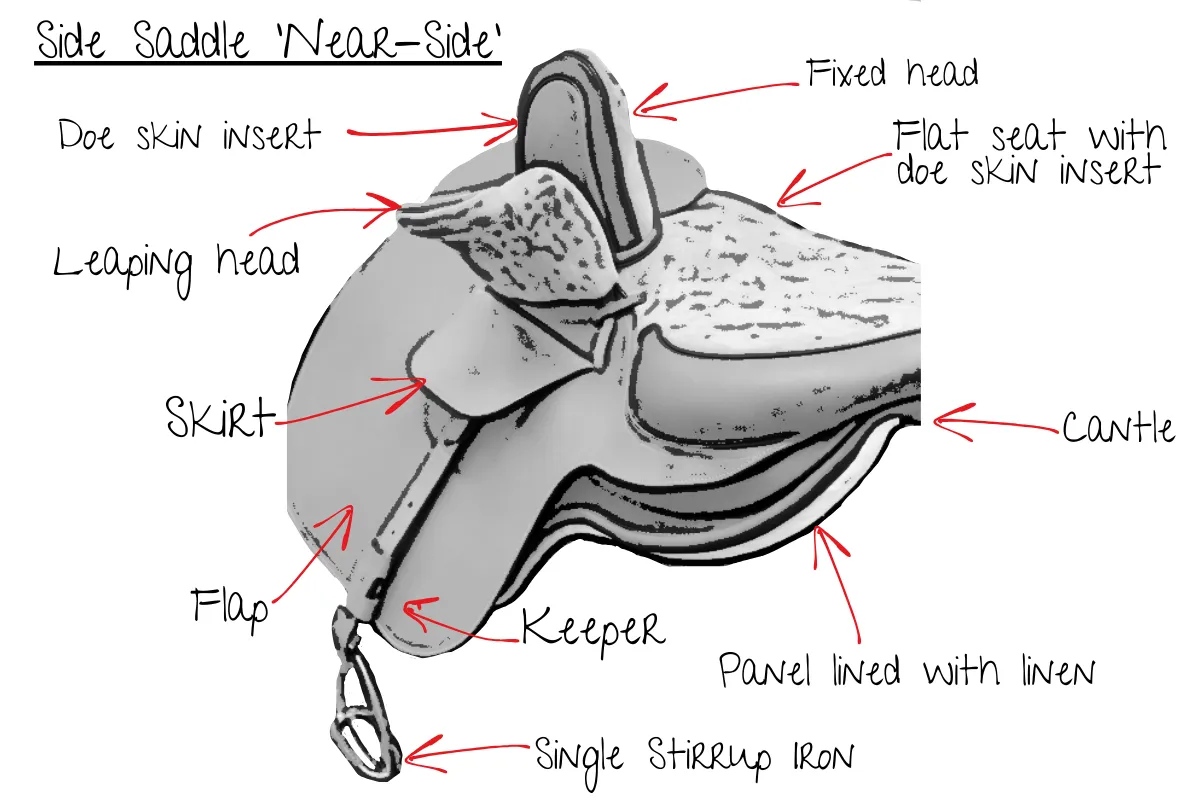
The panels of side saddles are traditionally lined with linen due to its breathability, which prevents heat buildup during long rides. This feature contributes to the horse’s comfort, ensuring that the panels mould naturally to the horse’s body over time and provide a smooth distribution of weight.
Essential Techniques for Building a Side Saddle
Crafting a side saddle requires technical skills and an understanding of balance. Each step—from material selection to final adjustments—contributes to a saddle that is both functional and enduring.
Leather shaping and cutting are foundational steps demanding precision, as each piece must fit together seamlessly for a cohesive product. The stitching process follows, ensuring strong, even stitches that reinforce the saddle’s structure and durability.
Securing the seat to the tree with precise alignment is critical, as this alignment forms the backbone of the saddle, supporting the rider’s weight and maintaining stability.
Why Side Saddle Building is Special
Mastering the craft of side saddle building connects the leatherworker to a tradition that blends history, art, and utility. This skill offers immense rewards:
- Craftsmanship: Expands skills and creates functional art.
- Customisation: Design saddles to fit the unique needs of riders and horses.
- Historic Preservation: Each side saddle crafted helps keep a cherished tradition alive.
Side saddle riding continues to captivate equestrian enthusiasts, featuring prominently in shows where riders are immaculately turned out in traditional habits, showcasing their skill and the timeless elegance of this riding style.
Side saddle building is an art that combines historic craftsmanship with modern skills, opening a world of creativity and historical connection.
To truly master these techniques and create pieces that last, consider joining the Side Saddle Construction Course at Walsall Leather Skills Centre, where experienced craftsman and side saddle specialist, Robert Jenkins from Malvern Saddle Company provides expert hands-on training.
Please note that sufficient prior leatherworking ability is required before enrolling in this course. Want to find out more? Have a look at the course information here.
